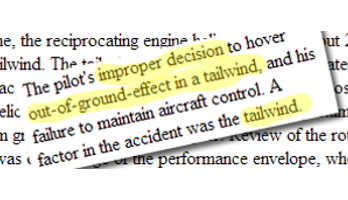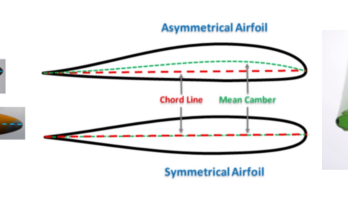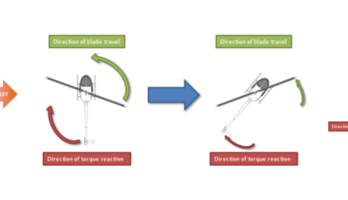HTV recently received this question: “In a flare, why does manifold pressure decrease?”
When you make a flare or a steep turn in forward flight, the momentum of the aircraft trying to stay on it’s original course adds ‘load factor’ to the helicopter’s weight, which causes the blades to cone upward. As the blades cone their center of mass moves inward toward to hub. This causes the rotor RPM to increase (like an ice skater in a spin bringing their arms inward – ‘coriolis effect’ or ‘conservation of momentum’ in effect).
If the helicopter did not have a governor (or in governor-off training), the engine and rotor RPM would increase unchecked – you would need to manually roll the throttle down to avoid an engine overspeed. But because the governor is on and working, it senses an engine RPM increase and the governor backs off the throttle to avoid an engine overspeed- showing a manifold pressure decrease.
But be careful – abrupt maneuvers, especially at max gross, high density altitudes and/or in turbulence will reduce the chance that the governor will respond in time.





